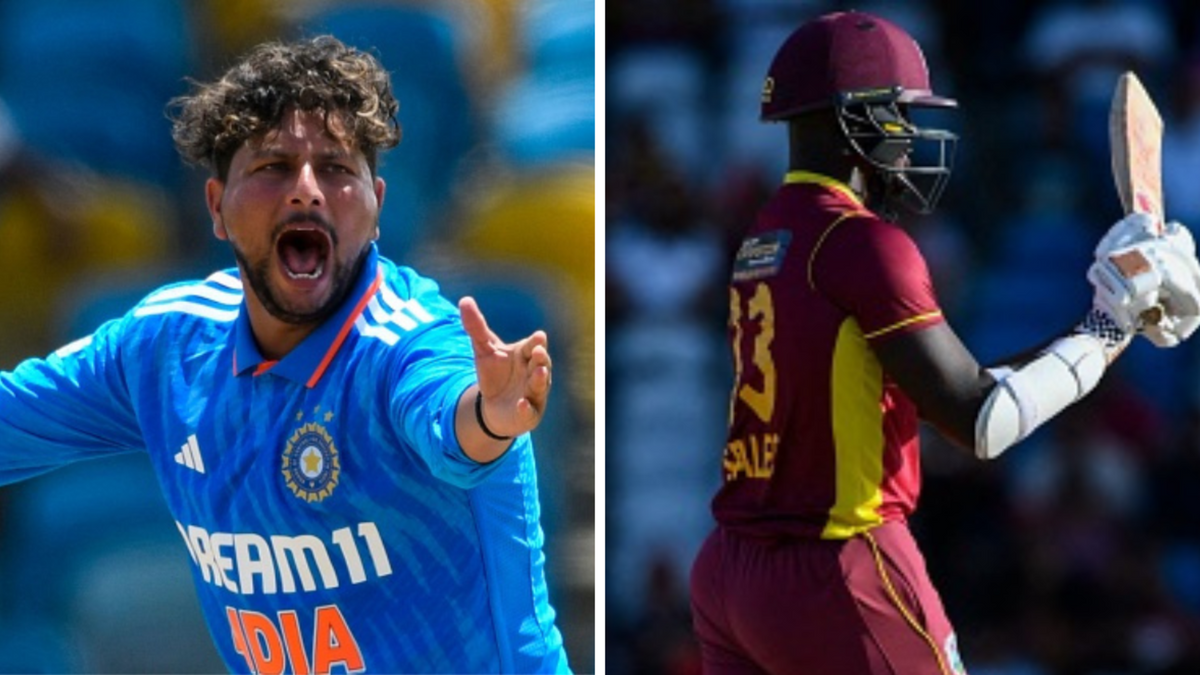
Confusion reigned when Jayden Seales was given out caught behind during the third West Indies-India ODI but DRS confirmed there had been no edge. A routine check for the lbw ruled it ‘umpire’s call’ but despite the original decision being out, Seales was given not out in the end.
India began to celebrate a huge win after Seales nicked a Kuldeep Yadav delivery to slip on the last ball of the 35th over. The batter immediately called for the DRS but was certain he was out as he proceeded to shake hands with the India players while awaiting the decision.
He had to walk back to bat after third umpire Marais Erasmus eventually declared him not out but not before a prolonged discussion with his on-field colleague, Michael Gough.
After the DRS was requested by Seales, Erasmus found that there had been no nick, with the Ultra-Edge showing no spikes. That automatically meant that Seales was not caught behind and that Gough had made an error. As per the protocols, Erasmus then went on to check for the lbw dismissal. The ball was pitching in line and the impact was also a red, and it all came down to whether the ball was hitting the wickets or not. It was ‘umpire’s call’, and Seales should have been out as Gough had ruled him out originally. However, the original decision by Gough was for a caught behind, and not for the lbw.
According to the ICC Playing Conditions, if a batter is likely to be out by any other mode of dismissal than the one that is being checked, the TV umpire shall proceed to check all viable replays before making a decision. In such a scenario, the batter shall be assumed not out originally for all other modes of dismissals, and can only be ruled out if the TV umpire finds conclusive evidence to overturn the ‘not out status.
Clause 3.3.4 states: “The third umpire shall not withhold any factual information which may help in the decision-making process. In particular, in reviewing a dismissal, if the third umpire believes that the batter may instead be Out by any other mode of dismissal, he/she shall advise the on-field umpire accordingly. The process of consultation described in this paragraph in respect of such other mode of dismissal shall then be conducted as if the batter has been given Not out.”
Here, there was no UltraEdge for Seales, but Erasmus felt that he could have been out lbw, and so proceeded to check for the same. Two reds and one orange indicated an ‘umpire’s call’. According to the clause, Seales was assumed to be not out while checking the lbw because, for any other mode of dismissal, it is as if “the batter has been given Not out.”
As it was an umpire’s call, Seales was not out. Only if Gough had given the batter out for the lbw and not caught behind originally, would Seales have been dismissed.
The batter was out three balls later, for 1, as India scripted a 200-run win en route to a series victory.








